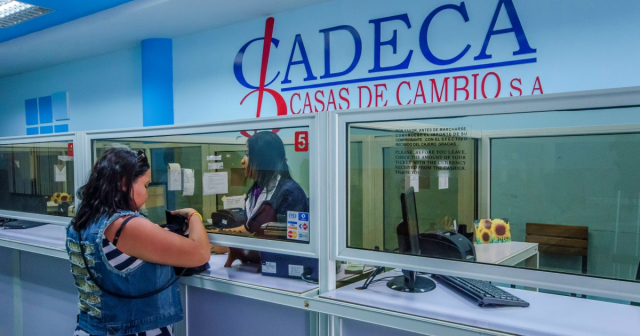The dollar starts the week with another sharp drop of 10 pesos in the average informal sale in Cuba.
The US dollar falls to 330 CUP, according to the value recorded at 7 in the morning of May 27th (Cuban local time).
The dollar has dropped by 20 pesos in just 48 hours and has accumulated a decrease of 65 pesos in 12 days since its value began to decline on May 16th.
Today, the value of the Freely Convertible Currency (MLC) also falls, standing at 280 CUP, a five-peso decrease compared to the previous day.
The euro, for its part, remains pegged at 350 CUP this Monday.
Although many Cubans consider the fall in the informal price of currencies in Cuba positive for their pockets, they wonder why consumer goods prices do not also decrease.
"The dollar is going down but I don't see prices going down"; "They are trying to justify because food prices are not dropping. Something strange is happening there"; "And what about when the products decrease in price? Because before, according to the sellers, prices went up because the dollar went up, and now?", these are recurring comments on social media.
Meanwhile, those who have the currency recommend waiting because they believe that in the long run it will rise again.
Meanwhile, the Cuban government remains silent.
In the midst of the current situation, the only recent intervention by the State has been by Currency Exchange Houses S.A. (CADECA), which described as "false" information circulated on social media indicating that as of May 27, branches of that entity would start selling dollars at 375 pesos.
Exchange rate today 05/27/2024 - 7:00 a.m. in Cuba:
Exchange rate of the USD to CUP according to elTOQUE: 330 CUP.
Exchange rate of the euro EUR to CUP according to elTOQUE: 350 CUP.
The exchange rate of the MLC to CUP according to elTOQUE is 280 CUP.
Alternative exchange rate of other platforms:
Dollar exchange rate (USD): Buying 326 CUP, Selling 335 CUP.
Euro exchange rate (EUR): Buy 335 CUP, Sell 349 CUP.
Exchange rate of the MLC: Purchase 280 CUP, Sale 284 CUP.
The informal exchange rate of Cuba offered here is not officially recognized or endorsed by any financial or governmental entity.
Below are the equivalences of each available euro and US dollar banknote to Cuban pesos (CUP), according to the exchange rates of this Monday, May 27th.
United States Dollar (USD) to Cuban Peso (CUP):
$1 USD = 330 CUP.
$5 USD = 1,650 CUP.
$10 USD = 3,300 CUP.
$20 USD = 6,600 CUP.
$50 USD = 16,500 CUP.
$100 USD = 33,000 CUP.
Euro (EUR) to Cuban Peso (CUP):
€1 EUR = 350 CUP.
€5 EUR = 1,750 CUP.
€10 EUR = 3,500 CUP.
€20 EUR = 7,000 CUP.
€50 EUR = 17,500 CUP.
€100 EUR = 35,000 CUP.
€200 EUR = 70,000 CUP.
This information can be useful to calculate the cost in Cuban pesos of any amount of dollars or euros. These conversions are based on the provided rates of 330 CUP per dollar and 350 CUP per euro.
Last week, the independent media outlet elToque gave its opinion on the sudden drop in the value of dollars, euros, and MLCs, mentioning some factors that could be influencing the abrupt fall in the price of currencies, although it does not believe that what we are seeing represents a true revaluation of the national currency.
In his analysis, the article published by Pavel Vidal Alejandro considered that one of the causes could be the so-called "market sentiment," meaning that "an increasing number of people started to consider that the price of currencies was excessively high and chose to sell before a possible drop," something that triggered the supply.
Pavel Vidal stated that since mid-May - coinciding with the beginning of the fall of the three reference currencies - there has been a significant increase in the supply of foreign currency in the sample monitored in virtual spaces.
On the other hand, ElToque pointed out that it is normal for "temporary corrections to occur after an extended bullish period in the market" and emphasized that since 2022, there have been six significant and consecutive drops in currency values. He explained that in some cases, they have lasted for weeks, although they have later recovered.
The economic analyst argued that the fundamental factors explaining the internal and external imbalances of the Cuban economy have not changed, and therefore, "the current inflection of the rate should not be associated with a modification of the long-term trend."
ElToque finds it difficult to predict what will happen because "there are many informational gaps that make it difficult to measure with greater precision the magnitude and evolution of the current crisis."
What do you think?
COMMENTFiled under:
